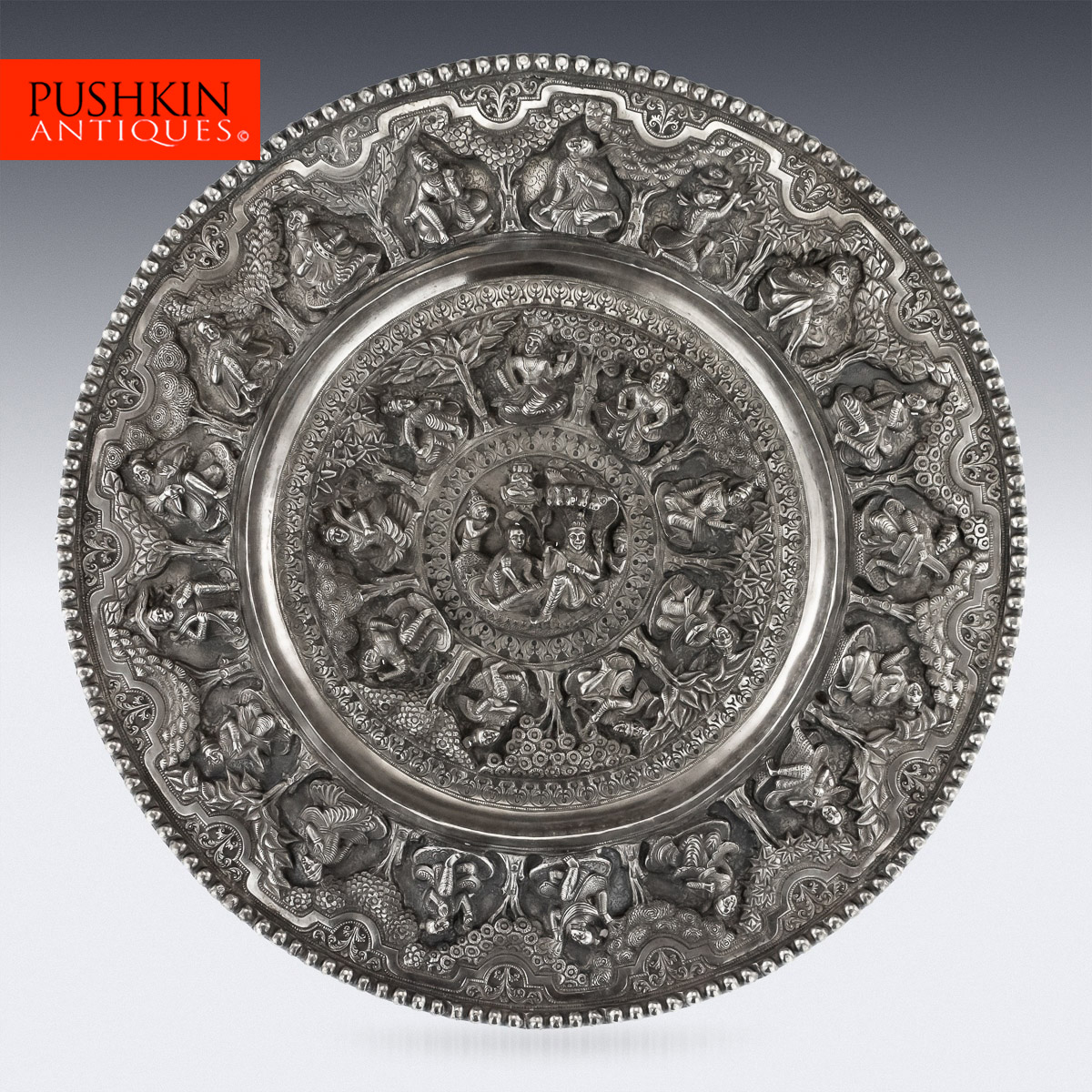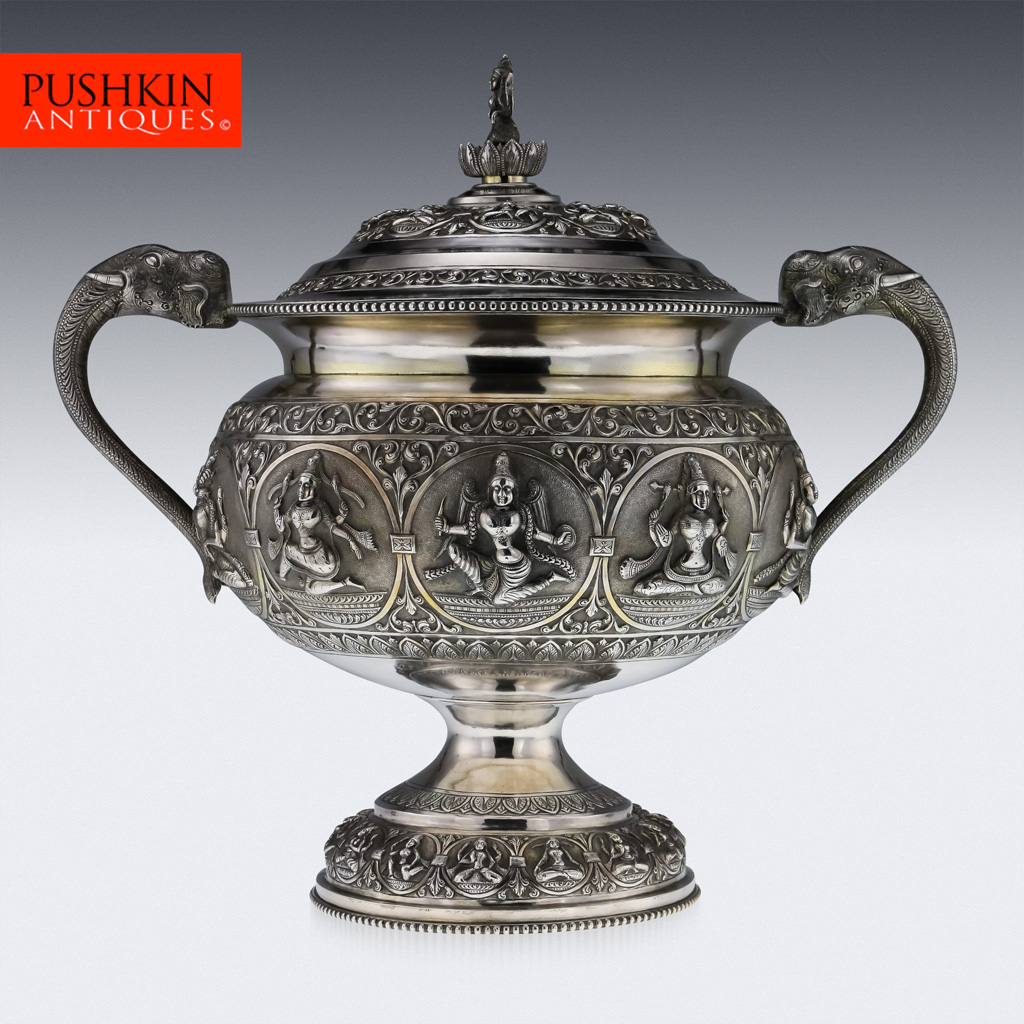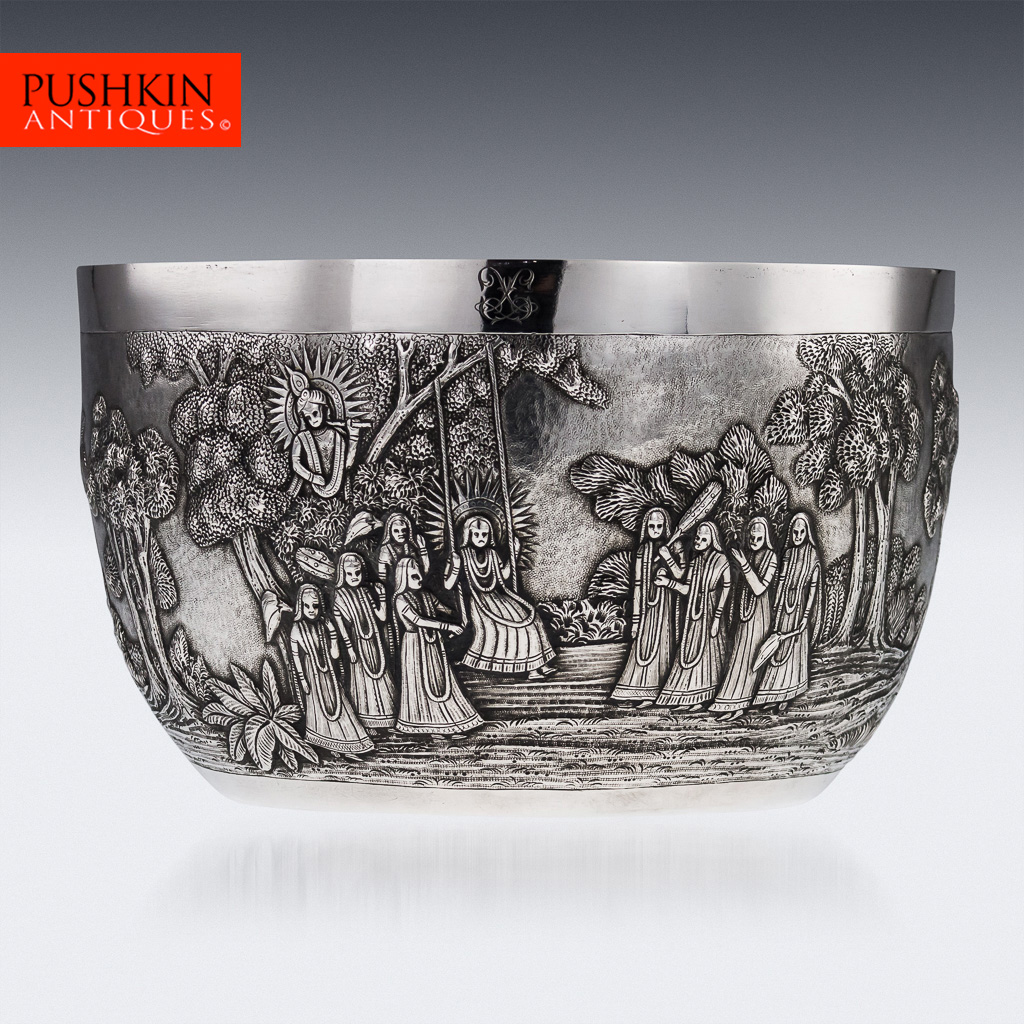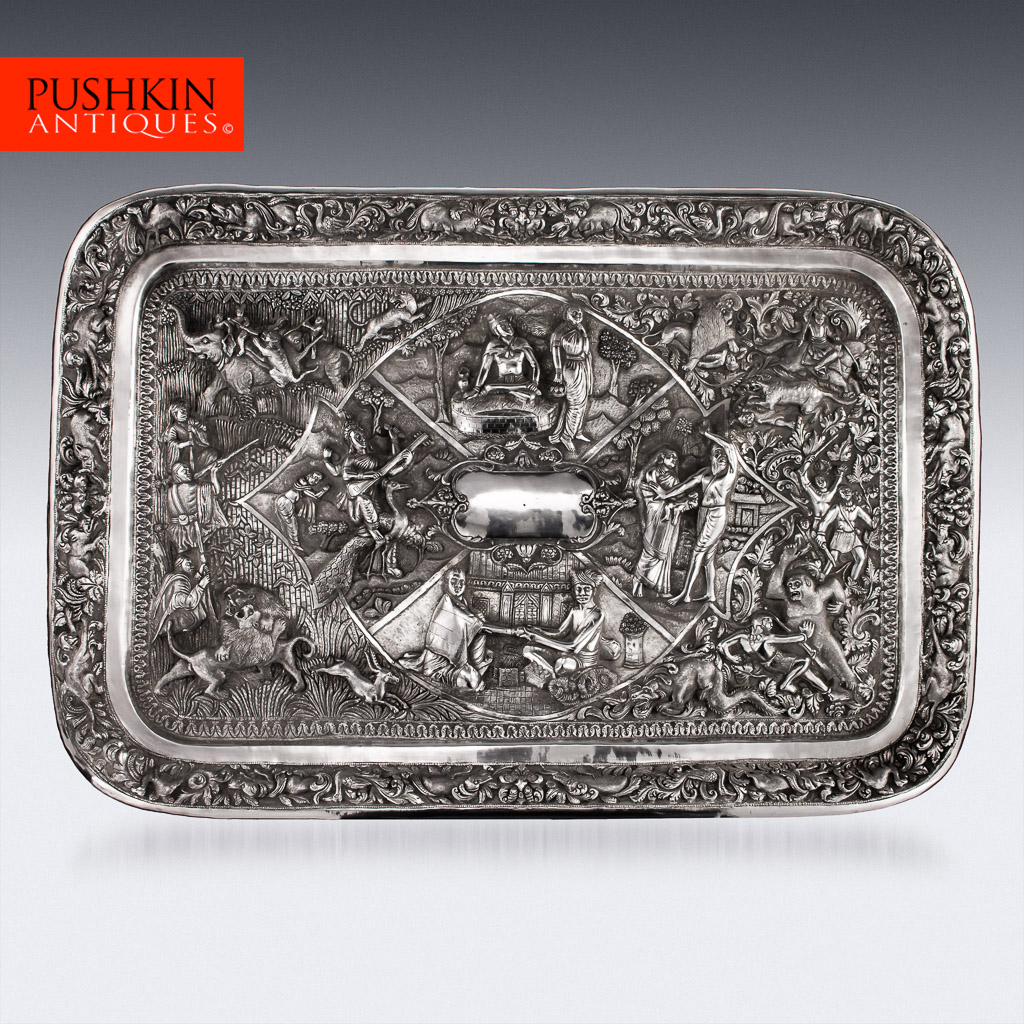
Indian Silver
Indian silver usually refers to the silverware produced in India during the Colonial period. The first foothold of the British East India Company in India dates back to 1615. From the 17th Century onwards, rare and stunning silver pieces were made both in the Portuguese and British colonies but the sudden growth in demand for silver produced in India mainly dates to the second half of the 19th Century and mostly concerns British colonies.
This period became very lucrative for local and British silversmiths. They set up workshops and shops in the major cities of the colony and some of them remained in business long after India achieved its independence from the British Raj in 1947. The greatest peculiarities of Indian silver are quality and variety: each region had its own distinctive style, themes and forms. The technique used by Indian silversmiths is mainly the repoussé, consisting in finely chasing the chosen pattern from the underneath, creating extraordinarily decorative designs in relief emerging from a finely tooled ground. The silver objects produced during this period are usually inspired by the contemporary Victorian silverware, sometimes imitating the English designs or, more often, interpreted in the characteristic local style. The most common items are salvers, trays, jugs, ewers, cups, beakers, boxes, vases, tea caddies, goblets, scroll holders and, more than anything, tea ware and bowls.
Cutch (or Kutch) is widely regarded as the most recognisable style of Indian silver, gaining significant popularity during the Victorian era when it was imitated by prominent English silversmiths, including Elkington & Co. While Indian silver is typically unmarked, Cutch silver stands out for its intricately chased scrolling foliage and floral designs, often adorned with reliefs of animals and hunting scenes.
The most illustrious figure in Cutch silver is Oomersi Mawji, considered the greatest Indian silversmith of his time. Along with his son, he operated the highly successful Mawji & Sons workshop in Bhuj, Gujarat, which became renowned for its exceptional craftsmanship. They signed their pieces as “O.M” or “O.M BHUJI.” Mawji's work is distinguished by its unrivalled quality and imaginative designs, frequently embellished with motifs of animals, hunting scenes, and figural handles shaped like snakes, elephants, tigers, and lions. One of his most celebrated creations is an extraordinary tea service designed to resemble birds, showcasing both his artistic talent and technical skill.
During the late 19th and early 20th centuries, several other silversmiths produced silver of comparable quality in the Cutch style, adhering to the traditional foliate designs enhanced with animal motifs. Notable artisans, such as Manikrai, Mawji Raghavji, and VK, occasionally signed their pieces with their initials, contributing to the rich legacy of Cutch silver craftsmanship. The legacy of Cutch silver continues to be appreciated for its cultural significance and intricate artistry, representing a unique blend of Indian and colonial influences.
Bombay's silver development is complex due to its status as a trade hub, drawing silversmiths from various Indian regions, particularly Cutch. Bombay produced Cutchi-style pieces and developed a pictorial fashion combining Cutch scrollwork with scenes of village life. The Swami style also emerged here, characterised by elephant-headed spouts and handles on tea sets, along with decorative animal motifs.
Poona, like Bombay, saw a mix of Cutchi craftsmen, complicating the identification of its silver wares. A distinct Burmese-style pattern also appears, leading to confusion with Lucknow pieces. Heerappa Boochena’s works, marked and highly valued, feature deeply embossed figural scenes and Cutch-type scrolls, alongside unique demon patterns.
The city of Madras is renowned for its Hindu tradition, which is reflected in its art and architecture, characterised by deities and religious figures. The silverware from this region, known as “Swami silver,” showcases this influence through decorative designs of Hindu idols (Swami is the Hindu word for idols). Swami silver pieces are created using repoussé and chasing techniques, featuring intricately detailed deities in various positions, often enclosed in circular cartouches or stylised temples, and surrounded by scrolling foliage or arranged in parades. The most notable silversmith in Madras was the Scottish clockmaker P. Orr, who established his shop in 1851 and collaborated with local artisans to specialise in Swami silver, marking his pieces with “P. Orr & Sons.” While many other workshops produced high-quality Swami silver during the latter half of the 19th century, most did not hallmark their items.
Calcutta silver is notable for its unique design, depicting scenes of Indian everyday life with human figures engaged in farming, accompanied by animals amidst trees, hills, buildings, and cities. This style tends to be smoother and less detailed than other Indian designs, favouring calm bucolic scenes over the more adventurous and sometimes violent themes found in Cutch or Lucknow silver. Established by the British in 1690, Calcutta has the longest history of silver production in India. By the 1770s, European-owned firms were creating British-style silver. The opening of the Suez Canal and the rise of global trade led to a demand for a distinct regional style, resulting in decorative patterns for the 1883 Calcutta International Exhibition. Common motifs included village scenes of Bengali life and Bamboo patterns influenced by Chinese export silver, with notable works produced by the famous firm Dass & Dutt, which operated in Bhowanipore during the late 19th century.
Kashmir silver is easily recognisable and distinctive compared to other Indian styles. Local silversmiths, primarily of Muslim culture, adopted a unique arabesque decoration featuring stylised foliage, commonly used on tea services and other silver objects, such as rosewater sprinkles. This characteristic pattern is known as the “paisley” design.
Lucknow, in Northern India, has a rich silversmithing history that dates back to the 10th century, primarily influenced by Islamic culture. By the latter part of the 19th century, local silversmiths began adopting and blending patterns from various regions, including Cutch, Madras, Calcutta, and Kashmir, making it challenging to identify Lucknow silver. Despite this, several recurring patterns are characteristic of the style: the hunting pattern, which depicts animals and hunters on elephants and horses, the scrolling foliage typical of Cutch, and jungle patterns featuring groves of palms and diverse wildlife. Rather than signing their pieces in the Western manner with names or initials, Lucknow silversmiths engrave unique figural hallmarks—often stylised flowers or animals—on the underside of their silver items.
The image above showcases various works by Indian silversmiths from our archives, highlighting their intricate patterns and characteristic styles.


















